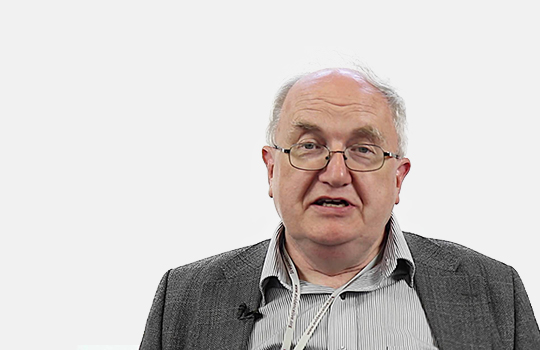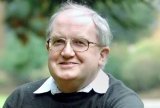372 In English nursery rhyme, it is traditional for a Duke to have 10 000 men. Here is a trial from Duke University that recruited 10 000 men and women, and allowed in a further three for extra measure. These 10 003 recruits were those “whose physicians believed that nonurgent, noninvasive cardiovascular testing was necessary for the evaluation of suspected coronary artery disease.” That is a fate which befalls a staggering four million Americans every year. These people were randomised to be investigated either by coronary computed tomographic angiography or functional testing, which in almost every case meant exercise ECG. I struggled a little with some of the figures, but I broadly agree with the conclusion: “In symptomatic patients with suspected CAD who required noninvasive testing, a strategy of initial CTA, as compared with functional testing, did not improve clinical outcomes over a median follow-up of two years.” But I do just wonder how many of these people really “required” testing in the first place.
Oh, the PROMISE trial of Duke,
It had 10 000 men;
They marched them up on a treadmill test,
Or they scanned their arteries then.
And when they were clear, they were glad,
And when they were blocked, they were down,
And when they were only halfway blocked,
They were neither glad nor down.
Nobody knows the meaning of the original nursery rhyme, and I’m not sure I know the meaning of this trial either.
1324 Unless I’m missing something, this randomised trial comparing open and laparoscopic surgery for rectal carcinoma is a model example of how to conduct a surgical trial. If I am missing something, you should be able to find out, because the sponsor of the trial was Ethicon Endo-Surgery Europe (a subsidiary of Johnson & Johnson), who had no role in the study design, data gathering, analyses and interpretation, or writing of the manuscript. J & J are in the process of releasing all their data sets to anyone with a credible research proposal through the YODA project (DOI: I am on the YODA project and I want people to use it). Anyway, if you’re a surgeon or have newly diagnosed solitary adenocarcinoma of the rectum within 15 cm from the anal verge without distant metastases, you’ll be pleased to hear that laparoscopic surgery was associated with rates of locoregional recurrence and disease free and overall survival similar to those for open surgery.
1333 “Demographic and Epidemiologic Drivers of Global Cardiovascular Mortality.” That’s the kind of topic the Lancet is good at dealing with—much better, it turns out, than the NEJM. You need a big long article with lots of charts that you can play with. And it should be open access too: I thought the Bill & Melinda Foundation insisted on that. But this over compressed, under illustrated piece is behind a paywall. And you’re not missing much if, like me, you are interested in the age and social class distribution of cardiovascular disease in individual countries and what may lie behind these. I’m aware that there are numerous intriguing paradoxes, but this article doesn’t have the detail to help you find or understand them. A missed opportunity.
OL Last week’s big news from the NEJM website was a large validation study of cell-free DNA (cfDNA) testing for foetal trisomy. Ironically, it comes at the same time as a survey showing that almost everyone with Down’s syndrome feels they are living a happy life. I really feel torn about this. I suppose it is good that parents will have a better way of knowing if they are expecting a child with Down’s. But if I was the father I just don’t know if I would be happy to agree with aborting it. The final choice, I guess, has to lie with the mother.
JAMA April 2015 Vol 313
OL A Chinese trial in people with elevated blood pressure raises the intriguing possibility that supplemental folic acid may reduce stroke. They recruited over 20 000 adults and gave them enalapril alone or enalapril plus 0.8mg of folic acid and followed them up for a median 4.5 years. The absolute risk reduction for first stroke between the groups was 0.7%, which on an individual level seems trivial: but if you look at this from a long term population perspective, this 20% reduction in relative risk might result in millions fewer strokes in China. This calls for replication in different populations. And is one more reason to put folate in bread, or rice.
JAMA Intern Med April 2015 Vol 175
OL Next week I’ll be putting my head above the parapet and giving a couple of short talks at Evidence Live. One of them will be about how we try to fit patients to the evidence and the outcomes we want: it is so much simpler than seeing how much of the evidence actually applies to each individual and corresponds with the outcomes they want. My illustration will be heart failure. The median age of patients is 76 or more, they have other illnesses—including whatever caused their heart to fail—they are tired and scared. They know they are going to die, most probably from pulmonary oedema, and many of them have experienced how distressing and protracted that can be. The majority would rather have better symptom relief than a longer life. And they want a place of comfort and safety when they die, not rushed treatment in a noisy ward where they are just another old person with HF. One way to tackle this would be to provide them with patient centred disease management at home, and this was the laudable aim of John Rumsfeld’s PCDM trial reported here. But the terse conclusion reads: “This multisite randomised trial of a multifaceted HF PCDM intervention did not demonstrate improved patient health status compared with usual care.” It is laudable that the authors chose this as their primary outcome measure and stuck with it. Had mortality been the criterion, this trial would have been a success. And levels of depression were significantly lower in the intervention group. Let’s build on this great work and see if we can do better. We owe it to these millions of people ending their lives in distress.
Lancet 4 April 2015 Vol 385
1295 Latanoprost is a prostaglandin analogue used to treat open-angle glaucoma: even I knew that, though I would be hard put to draw the anterior chamber of the eye. To me, it was just another repeat prescription in the days when I signed 100 a day. Pfizer used to make a couple of billion dollars or more each year from this drug, and it is still a nice little earner although its patent has expired. The company funded a placebo controlled study to show whether the drug preserves vision at borderline levels of intra-ocular pressure. It does.
1305 Are you a gene gnome investigating rare diseases? In that case I will quote you the conclusion of a Wellcome funded study, in full, and in the original Gnomish:
“Implementation of a robust translational genomics workflow is achievable within a large scale rare disease research study to allow feedback of potentially diagnostic findings to clinicians and research participants. Systematic recording of relevant clinical data, curation of a gene–phenotype knowledge base, and development of clinical decision support software are needed in addition to automated exclusion of almost all variants, which is crucial for scalable prioritisation and review of possible diagnostic variants. However, the resource requirements of development and maintenance of a clinical reporting system within a research setting are substantial.”
The BMJ 4 April 2015 Vol 350
The curmudgeonly old fart in me bridles at the phrase “precision medicine,” but on reflection it is an aspiration that I share. And seeing John Spertus’s name on this paper is a guarantee that at least this one is going to be good. The only time I ever saw patients immediately after percutaneous coronary intervention was when they came to me with big groin haematomas. Bleeding after PCI is a problem that lends itself to precision medicine, because you can calculate personalised risks using the Patient Risk Information Services Manager (ePRISM). So in your highest risk patients, you try to avoid the groin and go into the radial artery instead, and use bivalirudin and perhaps a closure device. I leave the details to any interventional cardiologists who are reading this. And this strategy did reduce bleeding when it was adopted, although “Marked variability between providers highlights an important opportunity to improve the consistency, safety, and quality of care.” Cardiologists, honestly.
Now that I’m an adopted member of the Cochrane family, I’m delighted to see a good example of its methods in this systematic review of the efficacy and safety of paracetamol (acetaminophen) in the management of spinal pain and osteoarthritis of the hip or knee. But, like most other people, I’m a bit disappointed by the result. It would have been nice to keep telling patients they should keep to this simple analgesic rather than take nasty non-steroidal anti-inflammatories or even nastier opioids. But that was always a bit of a non-starter, and I lose track of the number of times people with back pain have told me they might as well have been taking Smarties.
Plant of the Week: Ranunculus ficaria “Brazen Hussy”
In cold grey England, we’ve been looking longingly at the grass verges, spotting daffodils and occasional other joyful plants to remind us of spring. Among these are white violets (very pretty but sporadic), primroses (the loveliest), and celandines with little buttercup yellow petals held like stars.
Most celandines become weeds in the garden, but a few sorts are welcome weeds. “Brazen Hussy” has leaves of dark brown purple, which set off the flowers very well. It can spread, but is easily controlled. There is a double white celandine (actually pale cream), which is truly beautiful, but which needs assertiveness training. You hope for it to pop up everywhere, but you are lucky if it survives where you plant it.

